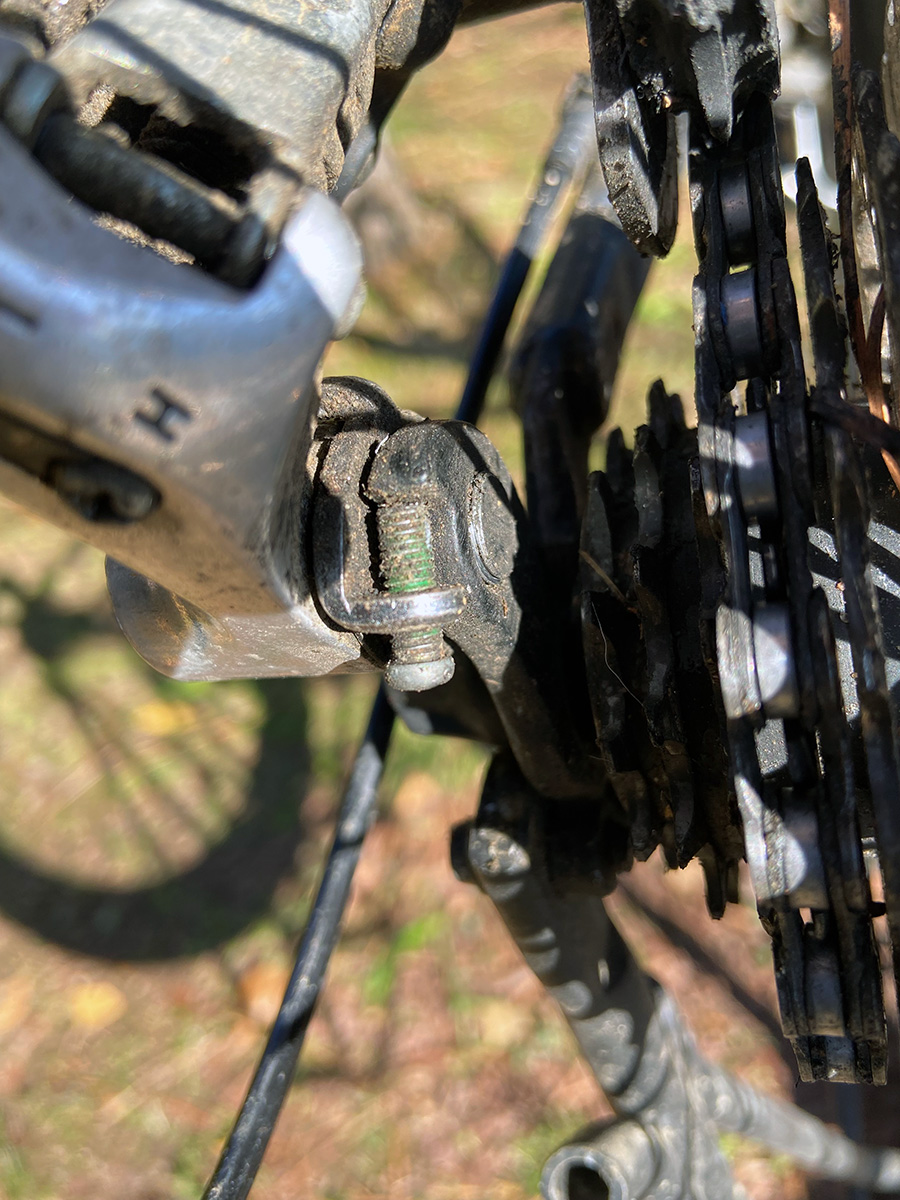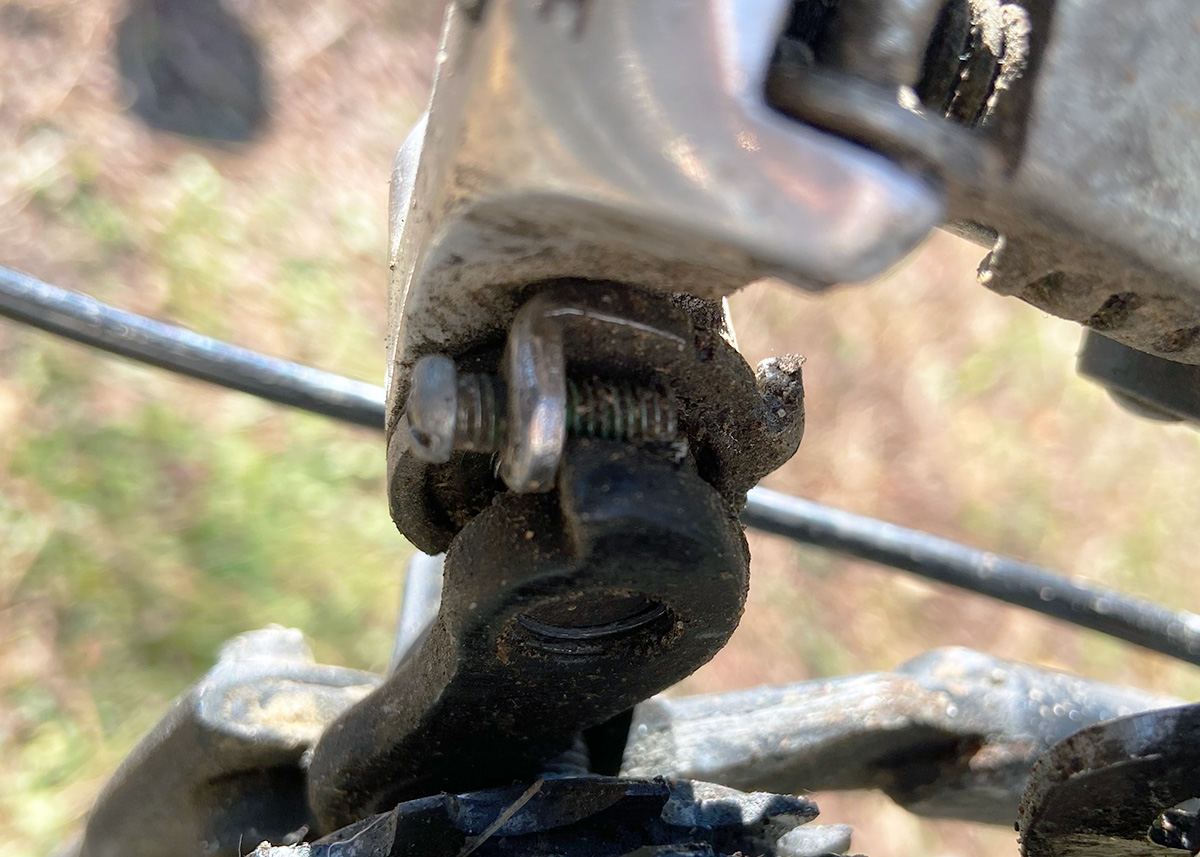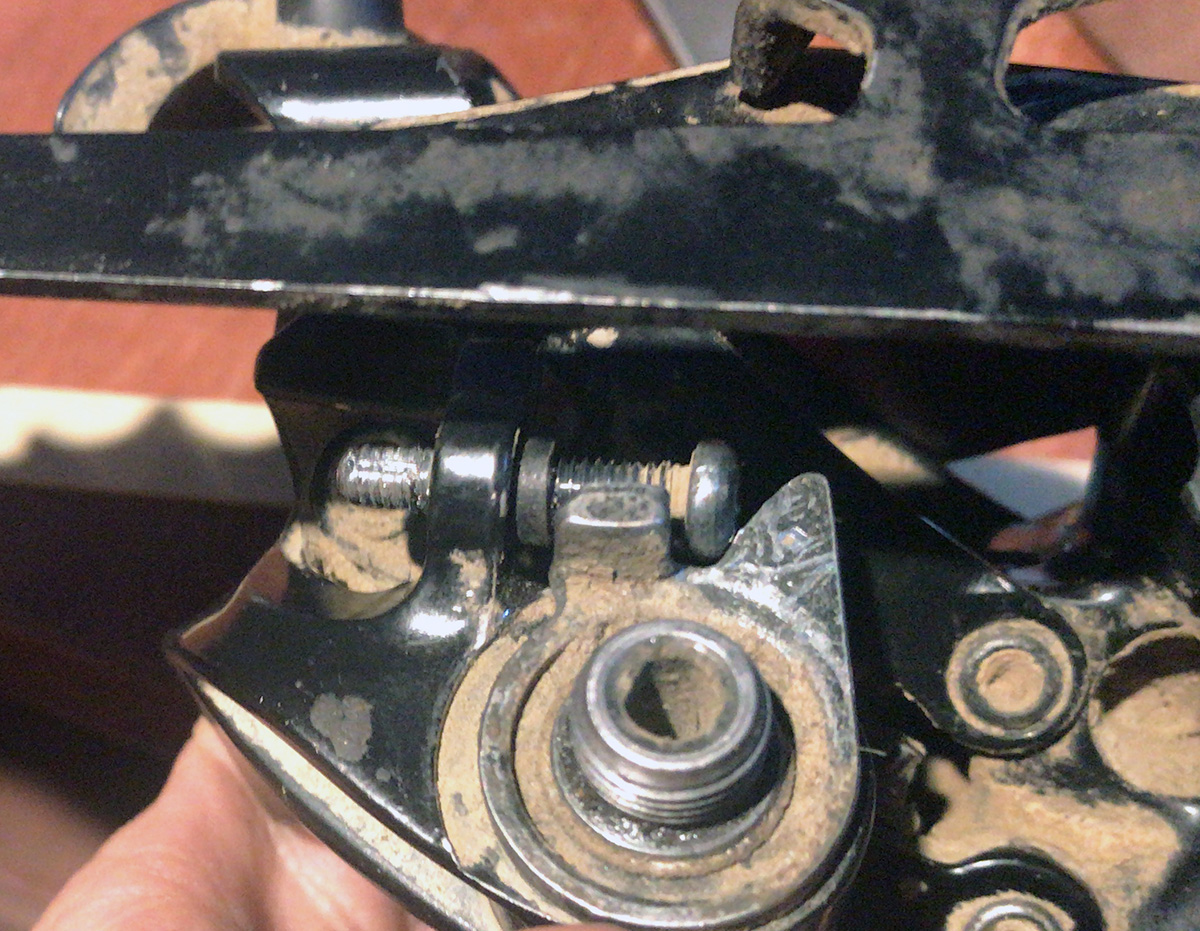Derailer Distress in the Andes
Though my breathing was labored just going up the stairs, my body didn’t feel rested, and I worried about the mountainous Andean ascent that loomed ahead, I was ready to move forward again. I was seven months into a round-the-world trip and was leaving Huaraz, Peru, after some days off in Lima with my husband who’d come to visit. My emotions were a little raw, to say the least.
Even though I felt subpar, I pedaled 25 miles on pavement and gravel, gaining 2,700 feet in elevation. Not a bad day for touring but around mile 18, I hit malfunction junction. My gears jumped and slipped, moved independently or not at all as the chain skated all over my rear cogs. I stopped twice to address the issue but couldn’t tell what was going on. I checked the obvious things — cable tension and general attachments (you’d be surprised what can break loose after seven months of jostling on rocks).
I stopped for a while at an auto repair place and waved off the useless help of the mechanics who were ready to take a hammer to the fragile metal and springs. I stopped a second time around dusk and realized what was really going on. The b-limit screw (officially known as the body angle screw), which sets the spacing between the derailer’s top pulley and the cogs, was caput. I was now without the use of several of the easier gears, which meant that I could not pedal over the snowy mountains I was heading towards. Damn.

Having ridden for almost six hours uphill and not wanting to backtrack, I considered my options. Thanks to the far reaches of technology, I knew that a fellow bikepacker and new friend, Brian, would be coming my way from Huaraz the next day. Communicating on a tenuous cell connection, he agreed to bring a new derailer from the only bike shop in Huaraz.
Calling it a day, I camped on the edge of “El Silencio,” a stunning landscape that lives up to its name. The hushed, muted grasslands far above treeline with snowy peaks in the distance made for one of the most peaceful nights of my seven months on the road.
I traveled another half-day towards Huascaran National Park, pedaling when I could and walking when I couldn’t. Up and up I went until I reached the ranger station on the edge of the park. I set up camp and made several rounds of tea while I waited for Brian to arrive. The frigid winds whipped my tent, and a stray dog endeared herself to me. When Brian arrived, we drank hot chocolate with the rangers. It tasted like warm velvet on my tongue and served as a mental and physical respite in the brittle, numbing air.
I tackled the derailer swap before dark, calmly remembering the necessary steps and channeling my experience as a bike mechanic many years ago. It’s a pretty simple exchange, but despite doing everything right, I could not make it work no matter how hard I tried. I adjusted the cable tension, b-limit screw, limit screws, and ran through the gears clunkily over and over again. It wasn’t working. I realized too late that my SRAM shifter would not work with the Shimano derailer Brian had brought. Damn again.

I settled in for a shivering night, shifting a hand warmer and a hot water bottle around my sleeping bag to keep the chill at bay. In the morning, I gave a despondent farewell to Brian. Back down the mountain I went. In two and a half hours, I covered what had taken me almost two days going uphill. I felt a small scratch at the back of my throat and went first to the mercado, an open-air market with many stalls found in most sizable towns and cities in Latin America. I loaded up on oranges and bananas, hoping to ward off whatever cold might be creeping in. I unloaded my bike bags at a hostel and took my bike to the bike shop. I knew the parts were incompatible but I was so tired both physically and mentally, just this once I desperately wanted someone else to figure it out and make it better.
I took to bed for days with strep throat. So there I was, throat burning, too weak to fetch myself a popsicle, alone in a foreign country, with a broken derailer. The bike shop called to say my bike was ready. I skeptically went to pick it up, feverishly sitting on upturned milk crates to keep myself from fainting. It wasn’t fixed at all, and simply shifted poorly and not into all the gears, the mismatched brands still fastened to the bike. Damn again.
I took the bike “home” to the hostel, got back in bed, and delved deep into bike forums full of obscure fixes and recommendations from middle-aged bike nerds around the world. I was grateful for their attention to detail and concern over the capabilities and limitations of derailers. I read research from MTBDaddio and Haggeredshins524, my new friends in this isolated existence of illness and mechanicals. I tried to use different bolts and screws in place of the b-limit screw, but that didn’t work. I wracked my brain for far-fetched solutions — could a welder weld a tab onto the contact plate and make the original part work? Why was it slipping off? Could I somehow make it stay put?
At the bottom of the rabbit hole of web research, I expected to find Alice in Wonderland’s Mad Hatter and Queen of Hearts. Instead, I found a solution: turn the b-limit screw around, so that the head of the screw would have more purchasing area to connect to the narrow plate. A-ha!

Turning the screw around made it very hard to adjust but there was no reason for it not to hold until I got to a bigger city. The gears shifted, were smooth even. After a few more days of devouring entire books and seasons of Netflix shows, I recovered and left for the mountains again. My little b-limit screw hack lasted for several thousand more miles.
For a great tutorial of the inner workings of the rear derailer, watch this video by Park Tool. It explains how the shifter on your handlebars pulls a cable to move the rear derailer, which then moves your chain to the appropriate cog to keep you pedaling forward in the appropriate gear.


